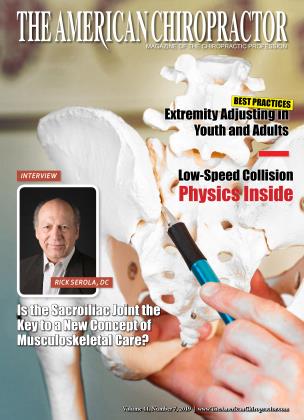The Spleen
ORGAN OF THE MONTH
Howard F. Loomis
Jr., DC
Introduction
The articles in this series are designed to highlight the various organ responses to stress. While your patients believe stress is due entirely to mental stimuli, the truth is that symptoms of stress result any time the body becomes energy deficient. They are not aware that the body must make energy to oppose gravity 24/7. Various organs require a constant supply of energy to perform their functions for maintaining homeostasis in the extracellular fluids, and they share that energy with the brain, which must maintain emotional and cognitive stability. Furthermore, the muscles cannot share their stored glycogen with the other organs because that is reserved for “fight or flight.”
Organ of the Month
This month we discuss the spleen, the largest lymphoid organ in the body. In the fetus, the spleen is an important blood-forming organ, but in the adult, only lymphocytes are formed there. The spleen is lined with aggregated lymphatic follicles that are filled with white blood cells, which filter and clean the blood, removing dead cells and foreign material.
Nevertheless, when the body requires more red or white cells than can be delivered by the bone marrow or spleen, muscle contraction wifi be found in those muscles that share spinal innervation with the spleen (T6 to T8). Because of the embryological connections established during the third to twelfth week, the patient often wifi present with chronic or recurring structural symptoms. Direct evidence of splenic involvement can be difficult to diagnose since hypertrophy of the spleen is a very late clinical finding in pathology.
Stress-Related Symptoms
Stress, regardless of visceral, structural, or emotional source, always evokes the same physiological response mechanisms on the part of the hypothalamus. We are aware of the fight-or-flight response in acute stress situations, but often forget that the same efferent signals continue unabated if the stress continues day after day. This seems to be the case with most of our patients. The question then becomes: Can the affected organ or tissue respond adequately to sympathetic or endocrine stimulation? It wifi if it has the nutrients to make the energy required. However, when it doesn’t, a different symptom pattern usually develops.
Embryological Connections
While most of the gut organs are derived from endoderm, the spleen is derived from mesenchymal (mesoderm) tissue from which the lymphatic and circulatory systems develop, which explains its many functions.
It removes old red blood cells and holds a reserve of blood, which can be valuable in case of hemorrhagic shock. It also recycles the iron.
The spleen synthesizes antibodies in its white pulp and removes antibody-coated bacteria and antibodycoated blood cells by way of blood and lymph node circulation.
Sympathetic Stimulation
Sympathetic stimulation contracts the muscle of the capsule and trabecula of the spleen. This increases blood flow to the periphery and can increase destruction of older crenated red blood cells, resulting in nutritional anemia.
The “globin’’ portion of hemoglobin is degraded to its constitutive amino acids, and the “heme” portion is metabolized to bilirubin, bound to albumin, and moved to the liver.
The reason I mention this is because of the unique situation regarding blood flow between the lungs, spleen, and liver. It is a very important clinical consideration.
Circulation for Lungs and Spleen
The superior and inferior vena cava carry oxygenpoor blood to the right atrium of the heart. The blood flows through the tricuspid valve to the right ventricle. It leaves the right ventricle via the pulmonary artery and is pumped to the lungs.
Oxygenated blood returns from the lungs to the heart via the four pulmonary veins to the left atrium of the heart, through the left ventricle, and into the aorta.
The first major branch of the abdominal aorta is the celiac artery. The splenic artery branches from the celiac and supplies oxygenated blood to the spleen. Blood leaves the spleen through the splenic vein, which goes directly to the hepatic portal vein and the liver.
Nutritional Considerations
If the stress has been long continued and the tissues become exhausted, then removal or reduction of the stress is required before improvement can be expected. Of course, nutritional excesses are often the key in these situations. Paramount in any symptom pattern is the patient’s diet.
A little-known but important study conducted at Penn State University in the early 1990s proved conclusively that the body assimilates and utilizes iron from food sources much better and without the side effects caused by iron supplements, such as sulfate, fumarate, and to a lesser extent, ferrous citrate.
Conclusion
In the months ahead, we will look at the visceral and structural connections of the pancreas.
Howard F. Loomis, Jr., DC, has an extensive background in enzymes and enzyme supplements. He is the founder and president of the Food Enzyme InstituteTM. His extensive knowledge of physiology, biochemistry, and enzymology has made him a sought-after speaker and a prolific writer. The Food Enzyme Institute offers seminars to health care practitioners around the country. Dr. Loomis published ENZYMES: The Key to Health in 1999, as well as The Enzyme Advantage: For Healthcare Providers and People Who Care About Their Health, also with medical Journalist Arnold Mann, in 2015.
[email protected] 800-662-2630.
 View Full Issue
View Full Issue






